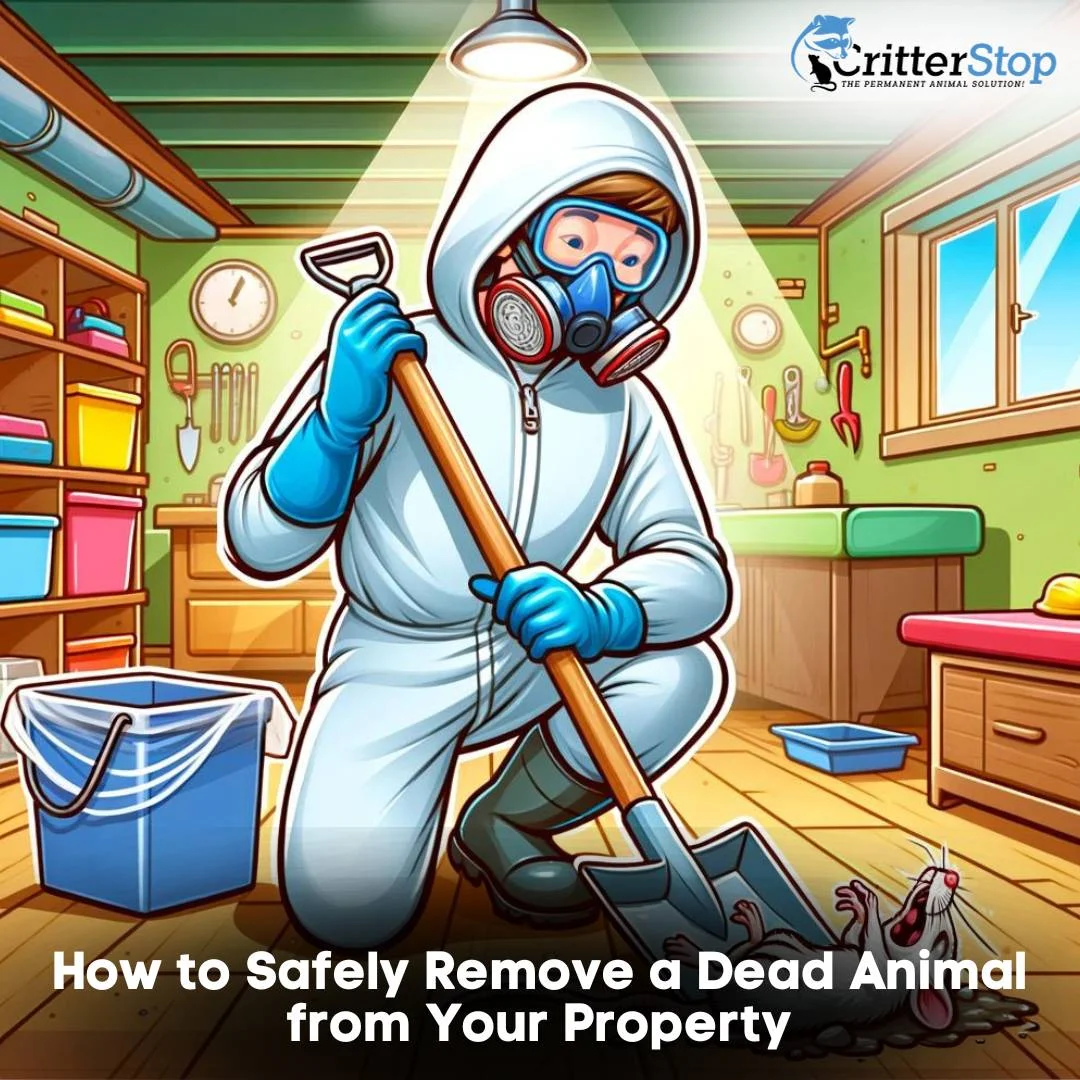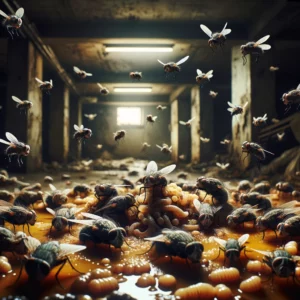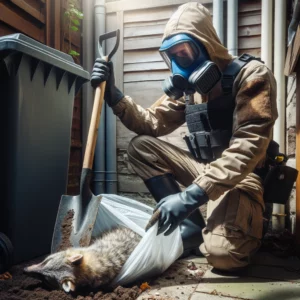
Do you have a dead animal on your property that needs to be safely removed? Discovering an animal carcass on your property can be distressing, but it's essential to handle the situation properly for both health and safety reasons. In this article, we will guide you through the process of safely removing animal remains, addressing health concerns, and provide information on effective pest removal in Ft. Worth.
Before you can safely remove the animal carcass, you first need to identify it. Knowing what to look for when identifying animal carcasses is crucial. There are several signs that can indicate the presence of a dead animal, such as a foul smell, scavenger activity, or visual sighting.
When identifying animal carcasses, be on the lookout for any unusual odors emanating from a specific area on your property. This could be a strong, putrid smell that is distinct from the usual scents of nature. The smell might linger in the air, alerting you to the presence of a carcass nearby.
Scavengers, such as flies, maggots, or vultures, can also indicate the presence of a carcass nearby. These creatures are nature's clean-up crew, attracted to decaying matter. If you notice an unusual number of flies buzzing around a particular area or vultures circling overhead, it could be a sign that an animal carcass is present.
Additionally, keep an eye out for any visual cues like bones, fur, or feathers. These remnants can provide valuable clues about the type of animal that might have met its demise on your property. A scattering of bones or tufts of fur can be a clear indication that a carcass is nearby.

Properly handling animal carcasses is not only important for aesthetic reasons but also for health and safety. Failure to handle a carcass correctly can lead to the spread of diseases, attract more pests, and create unpleasant living conditions on your property.
When a carcass is left unattended, it becomes a breeding ground for bacteria and other pathogens. These microorganisms can pose a significant health risk to humans and animals alike. Proper handling, including the use of protective gloves and disinfectants, is crucial to prevent the transmission of diseases.
In addition to diseases, the presence of an animal carcass can attract more pests to your property. Flies, maggots, and other insects are drawn to decaying matter, and their population can quickly multiply if not addressed promptly. This influx of pests can create a nuisance and potentially lead to infestations in and around your home.
Furthermore, the sight and smell of an animal carcass can create unpleasant living conditions on your property. The odor can permeate the surrounding area, making it uncomfortable for you and your family to enjoy outdoor activities. Additionally, the visual presence of a carcass can be distressing and unsettling.
By properly handling and removing animal carcasses, you can ensure the health and safety of yourself, your family, and your property. It is essential to take the necessary steps to identify and address carcasses promptly, minimizing the risks associated with their presence.

Once you have identified the animal carcass, it's time to remove it safely. Follow our step-by-step guide to ensure a proper and hygienic removal process.
Dealing with animal remains can be a challenging and unpleasant task, but it is essential to handle it properly to prevent any health risks or further complications. Whether you are faced with a deceased pet, wildlife, or livestock, the following steps will guide you through the process of safely removing the animal carcass.
1. Put on protective gear, including gloves, a face mask, and coveralls, to minimize direct contact with the carcass.
Before you begin the removal process, it is crucial to protect yourself from potential hazards. Wearing gloves will prevent direct contact with the carcass, reducing the risk of exposure to harmful bacteria or parasites. A face mask will help filter out any unpleasant odors or airborne pathogens, while coveralls will provide an additional layer of protection for your clothing.
2. Using a shovel or scoop, carefully place the animal carcass into a plastic bag or container, ensuring that it is fully contained.
When handling the carcass, it is essential to exercise caution and delicacy. Using a shovel or scoop will allow you to lift the remains without direct contact, minimizing the risk of contamination. Carefully placing the carcass into a plastic bag or container will ensure that it is fully contained, preventing any leakage or further spread of bacteria.

3. Tie the bag securely and place it in a sturdy garbage bag.
After placing the carcass in a plastic bag or container, it is crucial to tie the bag securely to prevent any accidental openings or exposure. Once securely tied, placing the bag in a sturdy garbage bag will provide an additional layer of protection and containment.
4. Double-bag the carcass to prevent leakage and potential odors.
To further minimize the risk of leakage or potential odors, it is recommended to double-bag the carcass. This extra layer of containment will ensure that any fluids or smells are effectively sealed, reducing the chances of attracting scavengers or causing a nuisance.
5. Dispose of the carcass in accordance with local regulations. Contact your municipality or a professional pest control service for guidance on proper disposal methods.
Proper disposal of the animal carcass is crucial to prevent any environmental or health hazards. It is essential to follow local regulations and guidelines when it comes to disposing of animal remains. Contacting your municipality or a professional pest control service will provide you with the necessary guidance and information on the appropriate methods of disposal.
Having the right tools and equipment is crucial for safe carcass removal. Some essential items you may need include a shovel or scoop, plastic bags, gloves, face masks, and coveralls. Investing in these tools will ensure a safer and more efficient removal process.
When it comes to removing animal carcasses, having the appropriate tools and equipment is essential. A sturdy shovel or scoop will allow you to handle the remains with care and precision. Plastic bags, both for containing the carcass and double-bagging, are necessary to prevent any leakage or potential odors. Wearing gloves, face masks, and coveralls will protect you from direct contact with the carcass and any associated pathogens or contaminants. By investing in these tools, you are not only ensuring your safety but also making the removal process more efficient and effective.
Handling animal carcasses involves several health risks that you must be aware of. Taking necessary precautions is essential to protect yourself and prevent the transmission of diseases.
When it comes to dealing with animal carcasses, it is important to understand the potential health risks involved. Animal carcasses can carry a variety of diseases, including rabies, leptospirosis, and hantavirus. These diseases can pose a serious threat to human health if proper precautions are not taken.
Animal carcasses can carry a wide range of pathogens that can cause diseases in humans. Rabies, for example, is a viral disease that affects the central nervous system and is transmitted through the saliva of infected animals. Leptospirosis, on the other hand, is a bacterial infection that can be contracted through contact with the urine of infected animals. Hantavirus, a potentially life-threatening disease, is transmitted through inhalation of airborne particles contaminated with the virus.
Exposure to these diseases can occur through direct contact with the carcass or its bodily fluids, as well as inhalation of airborne pathogens. It is important to note that even carcasses that appear healthy can still carry dangerous pathogens, so it is crucial to take appropriate precautions regardless of the animal's outward appearance.
Given the potential health risks associated with handling animal remains, it is important to follow proper safety protocols to minimize the risk of disease transmission. Here are some precautions to keep in mind:
By following these precautions, you can minimize the risk of contracting diseases associated with handling animal remains. Remember, your health and safety should always be a top priority when dealing with potentially hazardous materials.
If you're facing a dead animal removal issue in Ft. Worth and need professional assistance, there are pest control services available to help you with the process.
Consider hiring a professional pest control service in Ft. Worth for efficient and safe dead animal removal. These experts have the knowledge, experience, and equipment to handle the situation effectively while complying with local regulations.
For those who prefer a more hands-on approach, there are DIY pest removal tips you can follow to address the issue on your own. However, it's important to ensure your safety and take all necessary precautions when handling animal remains.
By following the proper procedures for safely removing animal remains and addressing health concerns, you can ensure a hygienic and pest-free property. Whether you choose to seek professional help or handle the issue yourself, it's crucial to prioritize safety and take the necessary steps to prevent any negative consequences.